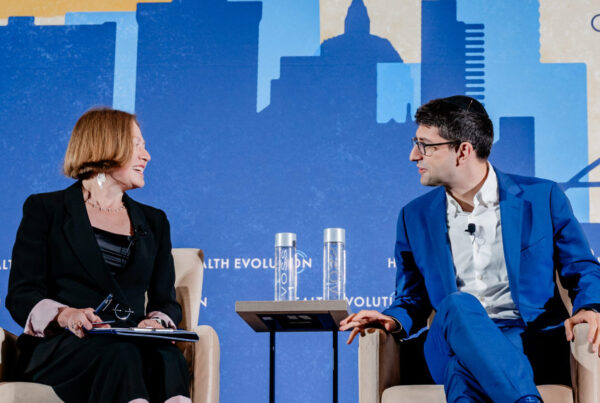While the term psychographics may not be in the lexicon of many health care CEOs, the need to improve consumer and patient engagement efforts is certainly well understood.
The consumer science of psychographic segmentation, which dates back to the late 1960s, came into the spotlight in the mid-2010s when it was hailed as being just as important as demographics 1 because it could be used to drive more insights about consumers’ decision-making processes and, in turn, enable practitioners to not only attract new consumers but also more effectively retain existing ones. 2
“Health care consumers’ preferences appear to be changing. Health care providers, health plans, and life sciences companies can use novel approaches to segmentation to better target, attract, and retain consumers,” according to a Deloitte report.3 “Such segmentation can help [health care organizations] tailor their interaction with consumers, whether they are looking for a new health plan, doctor, or support in dealing with a chronic condition — just to name a few examples.”
Simply put: Health care organizations have a significant, if not yet widely recognized, opportunity to apply more science and segmentation to ongoing patient or member engagement efforts. Analysts predicted last year, in fact, that consumer science holds the potential to reshape the ways health care organizations collect and analyze relevant data to understand emotional motivators and then apply those learnings to engagement efforts.4
To inform health system, health plan and life sciences executives interested in applying consumer science to population segments, this article examines the following:
-
- Why consumer science is important to engagement
- What can be accomplished by understanding more than claims data
- Which significant and immediate opportunities are most relevant to health care
Why consumer science is important to engagement
Effective patient engagement requires more than just implementing digital tools.
“CEOs leading health systems, health plans, or life sciences companies should understand that consumer science methodologies can be applied to increase the effectiveness of patient engagement programs,” says Justin Dearborn, CEO, PatientBond.
Consumer science practices are common in industries that have already embraced opportunities to transcend a one-size-fits all communication approach. In retail, for example, companies begin with basic demographic data, including age, income, marital status, race, and sex. But they also build more granular consumer profiles based on a particular segment’s preferences and psychographic characteristics, such as attitudes, beliefs, personalities and motivations.
Health care-specific consumer segments can often include people who rely on what physicians and clinicians tell them, those who prioritize others’ health instead of their own, proactive seekers of health information and guidance, believers in holistic or naturopathic health and wellness, and other motivating factors. 5
Related Innovator CEO Profile: PatientBond’s Justin Dearborn
Dearborn explains that one psychographic segment prefers text messages because they are non-intrusive, short, sweet and get to the point. Another consumer segment responds to email because it allows for sharing more information and education can be built into the messaging. A third psychographic segment wants a phone call because the human message is more personal and feels less like being part of an assembly line.
Regardless of the modality, organizations need to adjust messages to an individual’s priorities and motivations to activate behaviors. Even a message that reaches 30 percent of recipients still results in 70 percent of people in that target audience missing the communication entirely. Ideally, health care organizations use a channel mix designed for a patient or member of a specific psychographic profile.
What can be accomplished by understanding more than claims data
Health insurance claims data can only help understand what people do in terms of behavioral utilization. Consumer science, however, can reveal why they do it.6 Thus, understanding consumer motivation enables health care organizations to activate desired behaviors.7
Outside of the health care industry, oft-cited companies such as Amazon and Netflix create experiences based on a consumer’s interest and preferences and make suggestions that activate their shoppers.
What is perhaps less known is that some older and long-running organizations such as Procter & Gamble, as well as financial institutions, develop and offer products designed with specific consumer types in mind as well. P&G, in fact, uses psychographic segmentation and develops different products, packaging, and promotion specific to various consumer segments. 8
“PatientBond’s psychographic model was developed by executives from P&G who led such work in the health care division for more than a decade,” Dearborn said.
Watch: How consumer science can strengthen patient or member engagement
While health care has traditionally analyzed historical claims data reasonably well, the next phase is to move into predictive analytics to identify, for example, if a patient or member is at risk of an adverse health event and understand how to activate that individual to take necessary behavioral steps to avoid the unwanted and expensive incident. Consumer science can help leaders understand what message needs to be conveyed and the best tactics for communicating that to generate positive outcomes.
Which significant and immediate opportunities are most relevant to health care
Consumer touch points, in health care and elsewhere, create the opportunity to influence decision-making or activate behaviors. Health care organizations can improve patient or member experience by leveraging consumer science in accordance with those touch points. They are driven by digital workflows and insights that have been proven to influence patients to choose a provider, or members to choose a payer, according to Dearborn.
Significant opportunities to leverage psychographics in health care, include:
-
- Improving engagement rates for service line marketing
- Increasing participation rates for cancer, diabetes or mammography screenings
- Influencing behavior change with lifestyle modification programs
- Reducing unnecessary hospital readmissions
- Enhancing medication adherence rates
- Enabling patients to pay their bills more quickly
Embracing such opportunities is not easy. Good psychographic segmentation models are difficult to develop, particularly for health care organizations lacking in-house expertise. Testing models in the field is also time- and resource-intensive.
Health care organizations considering psychographic segmentation will also need a strong consumer insights team to conduct prospective research into patient needs. Establishing that team or partnering with an outside organization will enable executives to stay ahead of industry trends by developing and maintaining a panel of patients or members for ongoing market research and feedback to tie together insights and pressure-test concepts.
Conclusion
Psychographics “can be extremely useful if you are trying to plan strategically for the future,” an article in AJMC notes.9
Health care entities have multiple opportunities to apply psychographics to consumer engagement initiatives — many of which hold the potential to substantially reduce expenses, increase the resilience of health care organizations and improve the lives of the consumer populations they serve.10 Those opportunities are emerging in lockstep with evolving consumer expectations for unprecedented access to information as patients are taking a greater interest in their care and also exerting more influence on health systems and health plans.11
By understanding why consumer science is important to member or patient engagement and retention initiatives, health care executives can leverage psychographic segmentation to advance data-driven insights beyond health insurance claims data to operate on a more predictive, if not prescriptive, basis when serving patient populations.
Sources & Citations
1 Psychographics are just as important for marketers as demographics, Harvard Business Review
2 How do consumers navigate the health care frontier? Deloitte
3 How do consumers navigate the health care frontier? Deloitte
4 What is psychographics? CBInsights
5 3 practical examples of psychographic segmentation marketing, PatientBond
6 Consumer behavior, ScienceDirect
7 Understanding the motivations of patients: A co-designed project to understand the factors behind patient engagement, Health Expect
8 The key to a marketer’s success: Understanding consumer motivations, Forbes
9 Psychographic segmentation: Innovation in Patient Engagement, Population Health News
10 Understanding psychographics and how all health care behavior is local, AJMC
11 The empowered consumer, PwC











